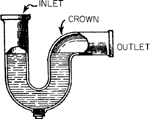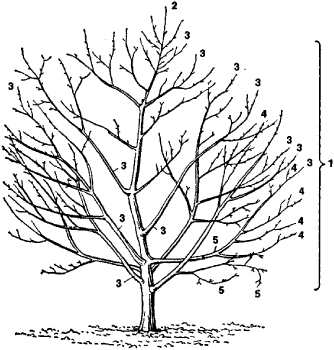crown
Crown
Crown




What does it mean when you dream about a crown?
Success, as in “crowned with success” or one’s “crowning achievement.” Leadership. The “jewel in the crown” is what is most valuable.
crown
[krau̇n]crown

crown
Crown
Crown
(dreams)Crown
the aboveground (above the bole) branched part of a tree. Under natural conditions different tree species have crowns of different shapes.

The following parts are distinguished in the crowns of fruit trees (see Figure 1): (1) the central trunk, or leader, the part of the trunk from the first lower branch to the base of last year’s growth; (2) the leading shoot, the apical growth from the previous year on the central trunk or on the skeleton branches; (3) the primary skeleton branches; (4) the secondary skeleton branches, the large branches making up the framework of the crown; and (5) the lateral (tertiary) branches, small, relatively short-lived branches which cover the skeleton branches and which are divided into vegetative and fruit shoots.
The vegetative shoots are one-year-old branches covered with leaves, also called growths, or leading shoots, since they increase the length of the branches every year and, thus, the size of the crown. The fruit shoots of seed-bearing trees consist of one-year-old growths more than 15 cm long with a flower bud at the apex; straight one-year-old lateral growths, 5–15 cm long; very short annual growths, 2 mm to 2–3 cm long, very fragile, with one well-formed leaf or flower bud; shoots usually 2–3 years old that bore fruit at one time; and perennial forked fruit branches. Amygdalaceous trees have fruit shoots called bouquet twigs (shortened fruit formations, 0.5–3 cm long, with groups of buds at the apex) and spurs (short fruit formations from 0.5 to 8–10 cm long).
There are artificial and natural crowns, and they are shaped taking into consideration their natural peculiarities. Depending on the species of tree, the variety, stock, age, and growth and agrotechnical conditions, crowns are given pyramidal, spherical, spreading, and other shapes. These shapes do not impede soil cultivation in the orchard, permit the fruit to grow well, and ensure the best access to air and light. In decorative horticulture, crowns are given round, spherical, and other shapes. The shaping of tree crowns is begun at an early age.
REFERENCE
Plodovodstvo, 2nd ed. Edited by V. A. Kolesnikov. Moscow, 1966.V. A. KOLESNIKOV
Crown
(1) Headgear symbolizing monarchical authority. Crowns were generally made of precious metal (usually gold) and richly decorated with jewels and pearls. There could be a variety of forms, including tiaras, diadems, caps, wreaths, and circlets with attached leaves, spikes, or plates. Crowns were used in the ancient world (Sumer, Akkad, Egypt, Rome), but they became especially widespread in Western Europe during the period of fully developed feudalism (11th century), when a hierarchy of forms, corresponding to the title of the wearer, was established (for emperors, kings, princes, dukes, counts). The crown also appears as a symbol in heraldry.
(2) A term used in the law of certain monarchies to indicate the authority (prerogatives) of the ruler, as well as those persons designated by him and acting in his name in the civil administration, military, or judicial system (the crown court, ministers of the crown, etc.). The term “crown” is especially widespread in English law.